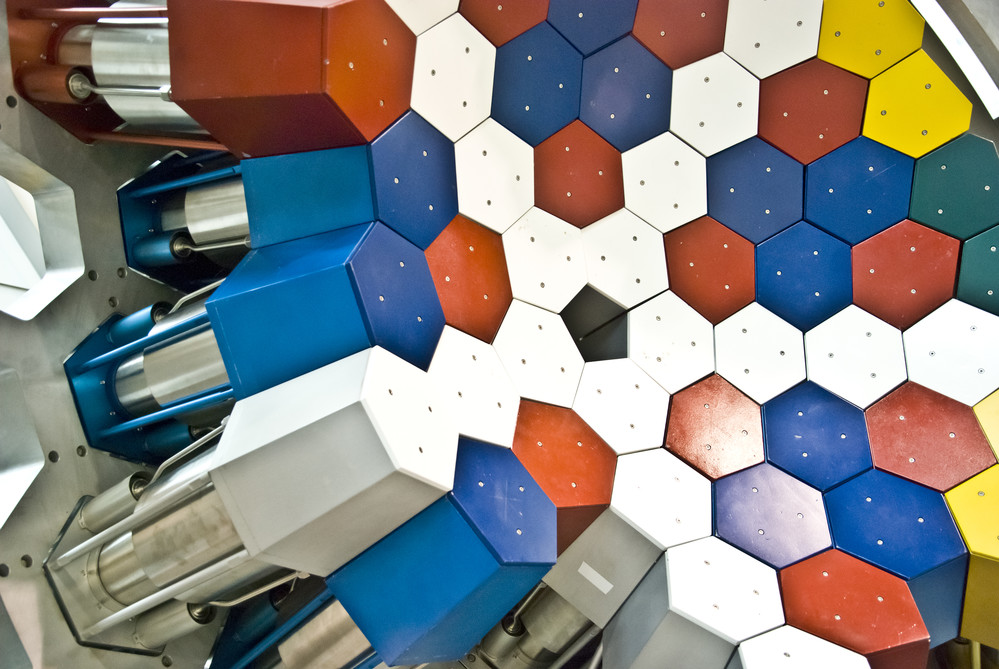Nuclear Research
To Exceed Expectations
Based on the robust knowledge of scintillation products, customized units for high energy physics experiments or standard designs for conventional research laboratories will help you to reach your objectives.
We have developed specific competencies through a wide range of industrial, medical & security applications (for example, the use in harsh environments for Oil & Gas market).
The Physicists & Engineers at our facilities have also a variety of software and test equipment to help in the design of specific products


The Advantage for Physics Research Projects
- 6 crystal growth technologies (60-2100°)
- 15+ Unique Products – Materials Chemistry
- Fluorescence, Optics and Performance Modeling – MCNP, DETECT
- Hermetic sealing of crystals to withstand extreme environments (temperature, shock and vibration)
- Special Testing Capabilities
- Low background chamber, Flood Imager, Shock and Vibration Equipment, temperature and humidity test chambers
Combined with our large portfolio of products from the high resolving crystals that are able to reach a 2.5% @ 662keV to the large conventional NaI(Tl) to organic scintillators (plastic, liquid, fiber) and our manufacture capabilities we can support a varied range of research projects.
Detection solutions are often custom engineered to meet the sensitive and critical operating and performance requirements such as detectors for High Energy Physics and Space Science Research. In parallel, for Standard Laboratories use, we can offer optimized and cost-efficient solutions based on standard products or slightly upgraded designs, without any compromise on the performances.
We have a long history supporting research in High Energy Physics and providing radiation detection solutions to Space Science Research missions. Read about projects that we have worked with the principal researcher to design and build the scintillation detector component.
Gamma-ray Coincidence Spectrometer
Fifteen (15) LaBr3(Ce) detectors (76 S 76 /3,5 /B380) were delivered in 2019 to the Institute of Nuclear Research “Atomki) in Debrecen, Hungary. The design, close to a standard product, integrates a specific selected PMT, to allow fast but high resolving acquisition. The very good stopping power of the material and the off-the-shelf dimensions were other assets that drove the customer's choice for the experiment. Read about Atomki’s new high-resolution LaBr3 spectrometer, which will record gamma–gamma pairs from excited nuclei in the Cern Courier

HECTOR (High-Efficiency Total absorption spectrometer)

According to Anna Simon, University of Notre Dame Assistant Professor, the high efficiency of the detector makes it a great tool for measurement of proton and alpha capture reactions that occur in explosive stellar environments where heavy nuclei are produced.
Source: http://blogs.nd.edu/anna-simon/research/hector/
DESCANT Neutron Detector Array
The deuterated benzene can detect both recoiling electrons from Compton-scattered γ-rays and recoiling deuterons on which neutrons scattered. Read further about the project at the University of Guelph Physics page



We have provided scintillation detectors and materials for space missions such as:
BeppoSAX (1996), Lunar Prospector (1998), Mars Odyssey (2001), ESA INTEGRAL (2002), Mercury Messenger (2004), ASTRO-E2 (2005), Curiosity Mars Rover (2011), CALET Calorimetric Electron Telescope (2015)
and been involved in major Nuclear Physics programs to provide the BGO anti-compton shields such as:
EUROGAM, EUROBALL, GASP, GAMMASPHERE.